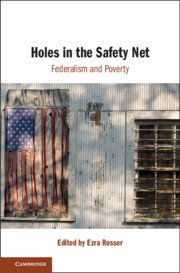New Article: Kenneth Stahl, Mobility and Community in Urban Policy, Urban Lawyer forthcoming 2014. Abstract below:
Urban policymakers have long debated whether to focus on people or on places. Should the government give poor people the means to leave deteriorated neighborhoods, or attempt to bolster such neighborhoods by reinforcing the social norms of the community? Should cities direct the police to crack down on low-level crime, or foster informal connections between the police and local institutions? Definitive answers to these questions have been elusive, but Robert Sampson’s new book GREAT AMERICAN CITY, perhaps the most ambitious work of urban sociology in a generation, provides some needed insight. Using a massive set of data, Sampson demonstrates that people are ineluctable products of their local environments, and he concludes that “place-based” policies that focus on building community are more likely to be successful than policies premised on the assumption of individual mobility and choice.
This essay revisits the “people v. places” debate in light of GREAT AMERICAN CITY. Though the book is sure to have a tremendous impact on that debate, Sampson devotes relatively little attention to the policy implications of his work, and thus I attempt to articulate and probe what I see as the book’s major policy implications. Principally, I interpret Sampson’s work as an implicit challenge to the predominant public choice model of local government, which conceptualizes urban residents as mobile individuals who make locational choices regardless of social context. Seen in this light, GREAT AMERICAN CITY raises important questions about the wisdom of policymakers’ longstanding reliance on the public choice model, but also leaves much to speculation. I further argue that Sampson’s findings – particularly regarding the difficulties that disadvantaged neighborhoods face in overcoming the stigma of crime and poverty – give reason to doubt the viability of some of the place-based policies he champions, which risk further stigmatizing such neighborhoods. Finally, I argue that in light of Sampson’s findings, efforts to aid disadvantaged communities might be most effective if they undertook to induce people to stay in such communities, a possibility that Sampson does not explore. I conclude that, despite some shortcomings, GREAT AMERICAN CITY is worthy of the highest praise, for it clarifies a wide range of questions for policymakers and opens broad vistas for future research.





